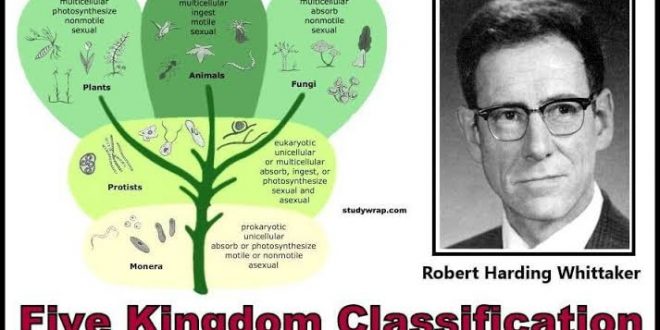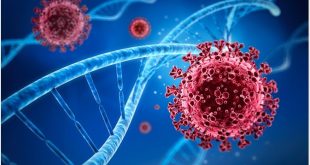Our living planet has a huge number of living organisms. We can’t know each of them properly without a proper format that going to direct us to know this variety and richness of organisms. That’s why we were introduce with a new term-CLASSIFICATION!
What is Classification?
The system of assembling organisms into groups or sets on the basis of likenesses and variances is called classification. It simplifies the study of a wide variety of organisms in a very systematic manner.
Following this concept of classification,many scientiest has given various methods of classification based on different aspects.
The five kingdom classification that we see today was not the initial result of the classification of living organisms. Carolus Linnaeus first came up with a two kingdom classification which included only kingdom Plantae and kingdom Animalia.
The two kingdom classification lasted for a very long time but did not last forever because it did not take into account many major parameters while classifying. There was no differentiation of the eukaryotes and prokaryotes; neither unicellular and multicellular; nor photosynthetic and the non-photosynthetic.
Putting all the organisms in either plant or animal kingdom was insufficient because there were a lot of organisms which could not be classified as either plants or animals.
All these confusions led to a new mode of classification which had to take into account cell structure, the presence of cell wall, mode of reproduction and mode of nutrition. As a result, R H Whittaker came up with the concept of five kingdom classification. He classified organisms based on cell structure, mode, and source of nutrition and body design.
Best safe and secure cloud storage with password protection
Get Envato Elements, Prime Video, Hotstar and Netflix For Free
Best Money Earning Website 100$ Day
#1 Top ranking article submission website
In 1969, Robert Harding Whittaker proposed the “Five kingdom classification system”. Let’s talk about this exciting topic.
Five Kingdom Classification
The system of classification is based on three levels of cellular organization which evolved to accommodate three principal modes of nutrition.
They are-
- Photosynthesis
- Absorption
- Ingestion
 Five Kingdom classification, Source: alevelbiology.co.uk
Five Kingdom classification, Source: alevelbiology.co.uk
So, the kingdoms are-
- Prokaryotae/Monera
- Protoctista/Protista
- Fungi
- Plantae
- Animalia
Kingdom Monera
All living things having one celled structure belong to the kingdom Monera.They are very essential organisms enriching the soil and serving as an important part of the nitrogen cycle.
The significant characteristics of Monera are mentioned below:
- The Monerans are unicellular organisms.
- They contain 70S ribosomes.
- The DNA is naked and is not bound by a nuclear membrane.
- It lacks organelles like mitochondria, lysosomes, plastids, Golgi bodies, endoplasmic reticulum, centrosome, etc.
- They reproduce asexually by binary fission or budding.
- The cell wall is rigid and made up of peptidoglycan.
- Flagella serves as the locomotory organ.
- These are environmental decomposers and mineralizers.
- They show different modes of nutrition such as autotrophic, parasitic, heterotrophic, or saprophytic.
- e.g. Bacteria and Cyanobacteria.
Kingdom Monera, Source:Google
Kingdom Protista
The primary feature of all protists is that they are eukaryotic organisms. This means that they have a membrane-enclosed nucleus. Other characteristic features of Kingdom Protista are as follows:
- These are usually aquatic, present in the soil or in areas with moisture.
- Most protist species are unicellular organisms, however, there are a few multicellular protists such as kelp. Some species of kelp grow so large that they exceed over 100 feet in height (Giant Kelp).
- Just like any other eukaryotes, the cells of these species have a nucleus which is bound by organelles.
- They may be autotrophic or heterotrophic in nature. An autotrophic organism can create their own food and survive. A heterotrophic organism, on the other hand, has to acquire nutrition from other organisms such as plants or animals to survive.
- Symbiosis is observed in the members of this class. For instance, kelp (seaweed) is a multicellular protist that provides otters protection from predators amidst its thick kelp. In turn, the otters eat sea urchins that tend to feed on kelp.
- Parasitism is also observed in protists. Species such as Trypanosoma protozoa can cause sleeping sickness in humans.
- Protists exhibit locomotion through cilia and flagella. A few organisms belonging to kingdom Protista have pseudopodia that help them to move.
- e.g. Microalgae and Protozoa.
Kingdom Protista, Source: Wikipedia
Kingdom Fungi
Fungi {sing. fungus (L.) = sphongos (Gr.) – sponge} are a kingdom of usually multicellular, eucaryotic, spore-producing, achlorophyllous organisms.
Know more about the kingdom Fungi from the article: Fungi: A Kingdom of Achlorophyllous Eukaryotes
Following are the significant characteristics of fungi:
- Fungi are eukaryotic, non-vascular, non-motile and heterotrophic organisms.
- They may be unicellular or filamentous.
- They reproduce by means of spores.
- Fungi exhibit the phenomenon of alternation of generation.
- Fungi lack chlorophyll and hence cannot perform photosynthesis.
- Fungi store their food in the form of starch.
- Biosynthesis of chitin occurs in fungi.
- The nuclei of the fungi are very small.
- During mitosis, the nuclear envelope is not dissolved.
- The fungi have no embryonic stage. They develop from the spores.
- The mode of reproduction is sexual or asexual.
- Some fungi are parasitic and can infect the host.
- Fungi produce a chemical called pheromone which leads to sexual reproduction in fungi.
e.g. Mushrooms, Moulds, Yeast.
Kingdom Fungi, Source: Medium.com
Kingdom Plantae
From tiny mosses to giant trees all plants of this greeny earth are included in the kingdom Plantae.
The plant kingdom has the following characteristic features:
- They are non-motile.
- They usually reproduce sexually.
- They follow the autotrophic mode of nutrition.
- These are multicellular eukaryotes with cell wall and vacuoles.
- These contain photosynthetic pigments called chlorophyll in the plastids.
- They have different organelles for anchorage, reproduction, support and photosynthesis.
- e.g. Broad-leaved tree, Conifer tree, Fern, Moss.
Kingdom Plantae, Source: Blogeducationforstudents.blogpost.com
Kingdom Animalia
Kingdom Animalia is composed of all animals. The animal kingdom is the largest kingdom among the five kingdoms. Animals are multicellular eukaryotes. However, they do not have a cell wall or chlorophyll like plants. Hence, members of the animal kingdom have a heterotrophic mode of nutrition. Kingdom Animalia has been classified into ten different subphyla based on their body design or differentiation.
- Kingdom Animalia, Source:Haikudeck
Important characteristics of Kingdom Animalia:
- All animals are multicellular, eukaryotic heterotrophs. They have multiple cells with mitochondria and they rely on other organisms for their nourishment.
- Adult animals develop from embryos: small masses of unspecialized cells
- Simple animals can regenerate or grow back missing parts
- Most animals ingest their food and then digest it in some kind of internal cavity.
- Somewhere around 9 or 10 million species of animals inhabit the earth.
- About 800,000 species have been identified.
Animal Phyla– Biologists recognize about 36 separate phyla within the Kingdom Animalia.
- Phylogenetic tree of Kingdom Animelia, Source:SlideShare
The different phylum of the animal kingdom are as follows:
- Porifera
- Coelenterata (Cnidaria)
- Platyhelminthes
- Nematoda
- Annelida
- Arthropoda
- Mollusca
- Echinodermata
- Hemichordata
- Chordata
Revised by
- Syeda Nusrat Jahan Mili on 15 September, 2021
 Plantlet The Blogging Platform of Department of Botany, University of Dhaka
Plantlet The Blogging Platform of Department of Botany, University of Dhaka






Well organized article on Five Kingdom classification topic.
Your article gave me a lot of inspiration, I hope you can explain your point of view in more detail, because I have some doubts, thank you.